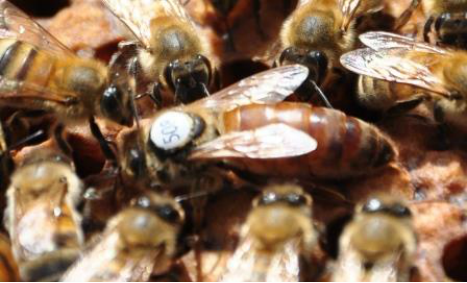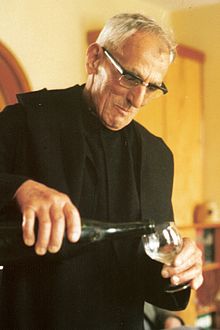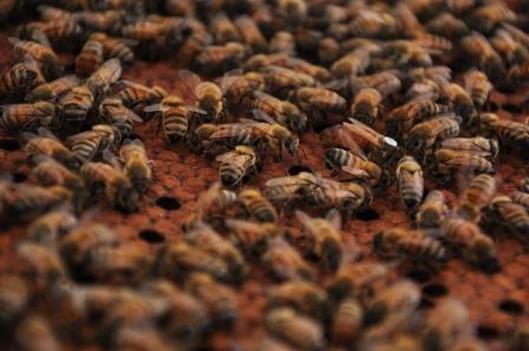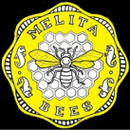Buckfast Bee
On Sale
On Sale
MDS - Mediterranean Dark Star (Buckfast Queen Bee)
Sold out
Buckfast Queen Bees selected in Sicily. In spring it develops quickly but without impulse to swarm. Collect a lots of pollen. Productive with strong nectariferous flows (like Orange). It bears hot, dry summers and rainy, windy winters well.
On Sale
On Sale
CDS - Continental Dark Star (Buckfast Queen Bees)
Buckfast Queen Bees selected in continental Germany. In spring it develops quickly and is perfect for early flowerings and strong nectariferous flows (like Acacia). Collect a lots of pollen. Bears good hot summers and cold winters.
On Sale
On Sale
ADS - Atlantic Dark Star (Buckfast Queen Bees)
Sold out
Buckfast Queen Bees selected in Atlantic France. Extremely sweet. In spring it develops fastly but arrives ready for harvest without impulse to swarm. Very productive on important nectariferous flows. Bears good wet and rainy winters. Due to its docility and low propensity to swarming, it's very good for urban beekeeping.
On Sale
On Sale
BDS - Boreal Dark Star (Buckfast Queen Bees)
Sold out
Buckfast Queen Bees selected in northern Germany. In spring it develops according to the rhythm of the season, and arrives ready for harvest without impulse to swarm. It bears very well long, cold winters. Accustomed to very short and intense seasons, it accumulates large amounts of Pollen.
ELGON Queen Bees (Italian/Buckfast + Monticola/Sahariensis)
Sold out
As African bees in South America developed resistance to Varroa in just 5 years, some Swedish beekeepers came up with the idea of obtaining reproductive material from a variety of African bees that are easy to handle and very similar to European bees (without the extremes defensive behavior of the variety brought to South America).
In March 1989 a group of four Swedish beekeepers went to Mount Elgon, Kenya, and collected drone sperm in capillary tubes and small larvae and eggs in small pieces of honeycomb. The purpose of using this breeding material was to increase the vitality and genetic variation of European bees with a "high potency natural resource". The bee breed was the Apis Mellifera Monticola, a dark and robust bee with a relatively good character and therefore easy to handle. Also in 1989 sperm and eggs from crosses between Buckfast bee and Apis Mellifera Sahariensis were brought to Sweden from Holland with the aim of avoiding inbreeding. It was easy to get good pairings with both Buckfast bees and Italian bees and the resulting bee is not a Buckfast bee, strictly speaking, but very similar, with a marked defensive behavior against varroa.
VSH Queen Bees (Buckfast)
Sold out
Untreated honey bees in tropical environments have been observed to develop certain levels of resistance to varroa. The strong selective pressure (no treatment by beekeepers, therefore a lot of Varroa) combined with a favorable climate for bees, allows a certain percentage of colonies to survive long enough to guarantee the creation of offspring (swarms, new colonies). These colonies have inherited one or more traits that help them keep the Varroa infestation under control.
Also in the institutes, colonies have been selected that have favorable traits and can better control the number of Varroa in the hive. The best results so far are achieved by selecting honey bees with Varroa Sensitive Hygiene (VSH) behavior: these bees can detect Varroa in the brood and remove the brood with Varroa so that Varroa cannot reproduce and multiply.
PRIMORSKY Queen Bees (Apis Mellifera Sossimai x Buckfast)
Sold out
In the Primorsky region, on the eastern coast of Siberia overlooking the Pacific Ocean (capital: Vladivostok), the honey bee was not present in nature, but the Cerana, the natural host of the Varroa mite. Towards the end of the 19th century, the settlers came from the European part of the Russian Empire, particularly from Ukraine. These brought with them colonies of bees, which presumably soon came into contact with Varroa mites from the nearby colonies of Cerana. However, varroa was only detected in this region in 1952. It can therefore be assumed that long-term natural selection has occurred here for resistance to varroa, as during most of this period no treatments were carried out against varroa. varroa.
Hygienic behavior can have a positive impact on a colony's ability to control the Varroa population. The USDA-ARS Bee Lab in Baton Rouge compared Russian bee colonies to other domestic lines and found that Primorski exhibited hygienic behavior at a much higher level (69% vs 37%). It was also observed that in the anti-varroa funds, colonies of Russian bees showed numerous Varroa mites with missing appendages and bite marks.

The Buckfast bee is a strain of honey bee. It is a man-made bee race, a cross of many strains of bees, developed by "Brother Adam", (born Karl Kehrle on 3 August 1898 in Germany), who was in charge of beekeeping at Buckfast Abbey, where the bees are still bred today. Most of the breeding work in Europe is done by breeders belonging to the breeders association Gemeinschaft der Europäischen Buckfastimker. This organisation is maintaining a pedigree for Buckfast bees, originating from Brother Adam's years.
Origin
In 1916, only 16 surviving colonies were left in the abbey. All of them were either pure Ligurian (Italian) or of Ligurian origin, hybrids between Ligurian and the English black bee A. m. mellifera. Brother Adam also imported some more Italian queens. From these he began to develop what would come to be known as the Buckfast bee.
Heritage
History
 Brother Adam
Brother Adam
Every new bee strain or bee race was first crossed with the existing Buckfast bee. In most cases, the new desired qualities were passed on to the new generation and the new combination was then made stable with further breeding work. Every crossing with a new race took about 10 years before the desired genes were fixed in the strain. Over 70 years, Brother Adam managed to develop a vigorous, healthy, and fecund honey bee which he christened the Buckfast bee.
The Buckfast bee is popular among beekeepers and is available from bee breeders in Germany, Ireland, the United Kingdom, France, and more. Most of the Buckfast bee's qualities are very favorable. They are extremely gentle and highly productive. Brother Adam, in his book, Beekeeping at Buckfast Abbey, writes that in 1920, they obtained "an average of no less than 192 lbs surplus per colony and individual yields exceeding 3 cwt [approx. 336 lbs]. " In the 1986 BBC-affiliated documentary, The Monk and the Honey Bee, more than 400 pounds of honey are reported to have been produced by a single Buckfast colony. According to Brother Adam, "The average annual honey yield over the last thirty years has been 30 kg (66 lb.) per colony. Thus we have a favourable balance compared with the average production in America or in Europe".
The stock has been imported into the United States (eggs, semen, and adult queens via Canada) and they are easily available.
Buckfast breeding program

Primary
Primary qualities are those qualities essential for any maximum honey production.
- Fecundity - maintaining at least 9 frames of brood May - July
- Foraging zeal - a boundless capacity for foraging work, close inbreeding to intensify this quality can be counterproductive.
- Resistance to disease
- Disinclination to swarm
Secondary
- Longevity
- Wing-power
- Keen sense of smell
- Defensive characteristics
- Hardiness and ability to overwinter
- Spring development
- Thrift
- Instinct of self provisioning
- Arrangement of honey stores
- Wax production and comb building
- Gathering of pollen
- Tongue-reach
Tertiary
- Good temper
- Calm behavior
- Disinclination to propolize
- No brace combs
- Cleanliness
- Honey capping
- Sense of orientation
Characteristics
Strengths
- Good honey producer
- Prolific queens (lay many eggs)
- Overwinters well
- Frugal - low amount of brood during fall (uses less honey stores during winter)
- Packs brood nest with honey for good wintering
- Curtails egg-laying during dearths
- Brood-rearing ceases during late fall
- Extremely gentle, with low sting instinct
- Low swarm instinct
- High tracheal mite tolerance
- Low incidence of chalkbrood and wax moths due to good housecleaning techniques
- Very hygienic
- Build up rapidly once started
- Produce little propolis/brace comb[10]
- Does well in cold/wet spring
Weaknesses
- Low amount of brood during winter
- Less honey or pollen due to erratic spring weather conditions
- Possibility of second-generation defensiveness if not requeened (may be from Africanized genes introduced)
On Sale
On Sale
BDS - Boreal Dark Star (Buckfast Queen Bees)
Sold out
Buckfast Queen Bees selected in northern Germany. In spring it develops according to the rhythm of the season, and arrives ready for harvest without impulse to swarm. It bears very well long, cold winters. Accustomed to very short and intense seasons, it accumulates large amounts of Pollen.
On Sale
On Sale
ADS - Atlantic Dark Star (Buckfast Queen Bees)
Sold out
Buckfast Queen Bees selected in Atlantic France. Extremely sweet. In spring it develops fastly but arrives ready for harvest without impulse to swarm. Very productive on important nectariferous flows. Bears good wet and rainy winters. Due to its docility and low propensity to swarming, it's very good for urban beekeeping.
On Sale
On Sale
CDS - Continental Dark Star (Buckfast Queen Bees)
Buckfast Queen Bees selected in continental Germany. In spring it develops quickly and is perfect for early flowerings and strong nectariferous flows (like Acacia). Collect a lots of pollen. Bears good hot summers and cold winters.
On Sale
On Sale
MDS - Mediterranean Dark Star (Buckfast Queen Bee)
Sold out
Buckfast Queen Bees selected in Sicily. In spring it develops quickly but without impulse to swarm. Collect a lots of pollen. Productive with strong nectariferous flows (like Orange). It bears hot, dry summers and rainy, windy winters well.
ELGON Queen Bees (Italian/Buckfast + Monticola/Sahariensis)
Sold out
As African bees in South America developed resistance to Varroa in just 5 years, some Swedish beekeepers came up with the idea of obtaining reproductive material from a variety of African bees that are easy to handle and very similar to European bees (without the extremes defensive behavior of the variety brought to South America).
In March 1989 a group of four Swedish beekeepers went to Mount Elgon, Kenya, and collected drone sperm in capillary tubes and small larvae and eggs in small pieces of honeycomb. The purpose of using this breeding material was to increase the vitality and genetic variation of European bees with a "high potency natural resource". The bee breed was the Apis Mellifera Monticola, a dark and robust bee with a relatively good character and therefore easy to handle. Also in 1989 sperm and eggs from crosses between Buckfast bee and Apis Mellifera Sahariensis were brought to Sweden from Holland with the aim of avoiding inbreeding. It was easy to get good pairings with both Buckfast bees and Italian bees and the resulting bee is not a Buckfast bee, strictly speaking, but very similar, with a marked defensive behavior against varroa.
VSH Queen Bees (Buckfast)
Sold out
Untreated honey bees in tropical environments have been observed to develop certain levels of resistance to varroa. The strong selective pressure (no treatment by beekeepers, therefore a lot of Varroa) combined with a favorable climate for bees, allows a certain percentage of colonies to survive long enough to guarantee the creation of offspring (swarms, new colonies). These colonies have inherited one or more traits that help them keep the Varroa infestation under control.
Also in the institutes, colonies have been selected that have favorable traits and can better control the number of Varroa in the hive. The best results so far are achieved by selecting honey bees with Varroa Sensitive Hygiene (VSH) behavior: these bees can detect Varroa in the brood and remove the brood with Varroa so that Varroa cannot reproduce and multiply.
PRIMORSKY Queen Bees (Apis Mellifera Sossimai x Buckfast)
Sold out
In the Primorsky region, on the eastern coast of Siberia overlooking the Pacific Ocean (capital: Vladivostok), the honey bee was not present in nature, but the Cerana, the natural host of the Varroa mite. Towards the end of the 19th century, the settlers came from the European part of the Russian Empire, particularly from Ukraine. These brought with them colonies of bees, which presumably soon came into contact with Varroa mites from the nearby colonies of Cerana. However, varroa was only detected in this region in 1952. It can therefore be assumed that long-term natural selection has occurred here for resistance to varroa, as during most of this period no treatments were carried out against varroa. varroa.
Hygienic behavior can have a positive impact on a colony's ability to control the Varroa population. The USDA-ARS Bee Lab in Baton Rouge compared Russian bee colonies to other domestic lines and found that Primorski exhibited hygienic behavior at a much higher level (69% vs 37%). It was also observed that in the anti-varroa funds, colonies of Russian bees showed numerous Varroa mites with missing appendages and bite marks.
